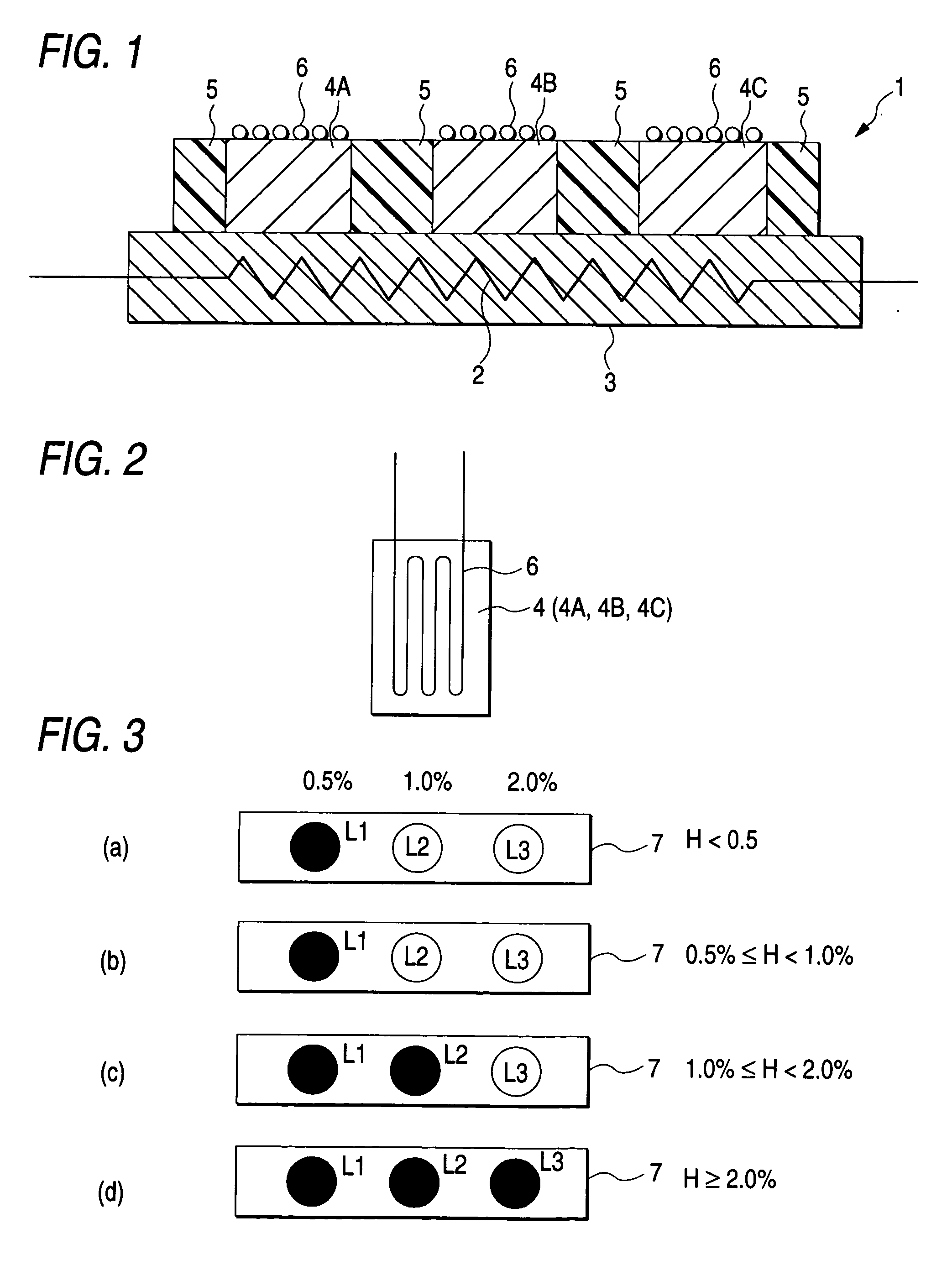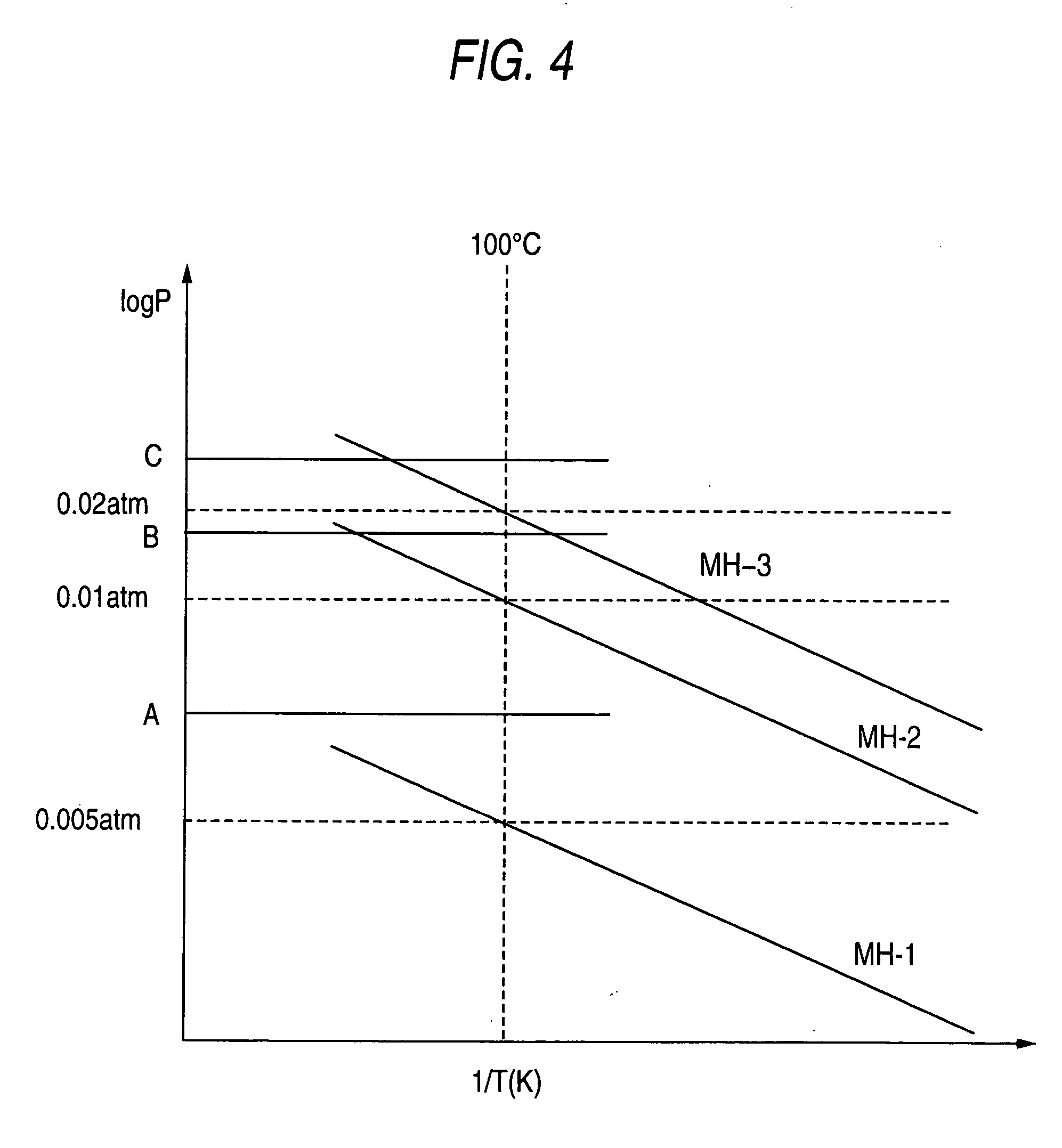Hydrogen sensor
a technology of hydrogen sensor and sensor, applied in the field of hydrogen sensor, can solve the problem that the sensor cannot detect a hydrogen concentration in a gas, and achieve the effect of preventing thermal interference between adjacent detection elements and being easy to d
- Summary
- Abstract
- Description
- Claims
- Application Information
AI Technical Summary
Benefits of technology
Problems solved by technology
Method used
Image
Examples
Embodiment Construction
[0023] Embodiments of a hydrogen sensor according to the invention will be described with reference to FIGS. 1 to 4.
[0024] As shown in FIG. 1, the hydrogen sensor 1 comprises a substrate 3 in which a micro-heater is buried; a plurality of (in the embodiment, three) detection elements 4A, 4B, 4C (denoted as “detection elements 4” when particular identification thereof is not required) disposed on the upper surface of the substrate 3; heat insulation layers 5 (thermal insulating means) which are disposed around the respective detection elements so as to separate the adjacent detection elements 4, 4; and a strain gauge (detection means) 6 attached on the upper surface of each of the detection elements 4.
[0025] The substrate 3 serves as a support for integrally supporting the three detection elements 4A, 4B, 4C, and also serves as a temperature-maintaining device for holding the temperatures of the detection elements 4A, 4B, 4C at approximate equal values. A micro-heater 2 of the dete...
PUM
 Login to View More
Login to View More Abstract
Description
Claims
Application Information
 Login to View More
Login to View More - R&D
- Intellectual Property
- Life Sciences
- Materials
- Tech Scout
- Unparalleled Data Quality
- Higher Quality Content
- 60% Fewer Hallucinations
Browse by: Latest US Patents, China's latest patents, Technical Efficacy Thesaurus, Application Domain, Technology Topic, Popular Technical Reports.
© 2025 PatSnap. All rights reserved.Legal|Privacy policy|Modern Slavery Act Transparency Statement|Sitemap|About US| Contact US: help@patsnap.com



